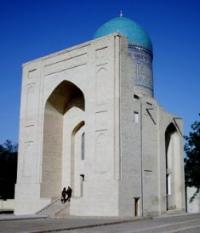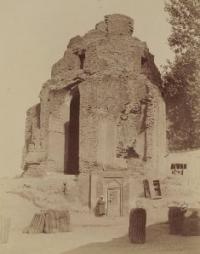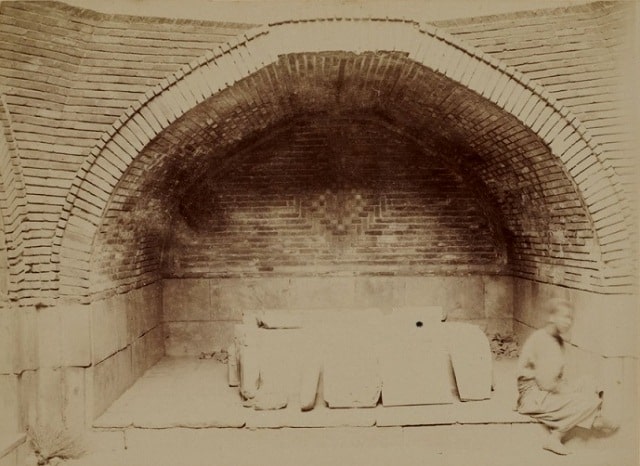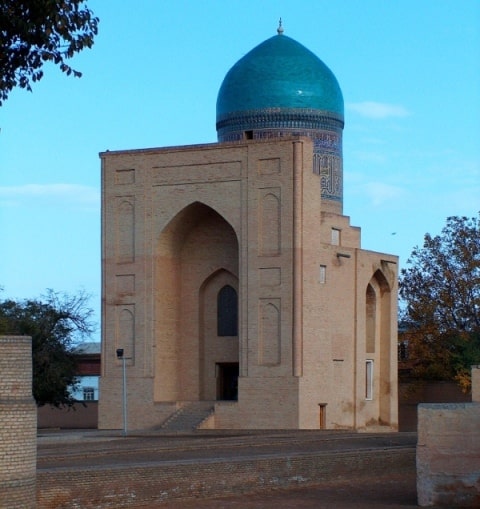You are here
Bibi-Khanym mausoleum.


Monuments located in Samarkand.
“If you follow the ancient maps written on the stars, no person will ever understand you. So if you could read these maps, would you follow them? And forever be misunderstood? Or would you close your eyes tightly and pretend to be like everyone else?”
C. JoyBell C.
Walk to Bibi-Khanym mausoleum in Samarkand.
Up to the mid-XVIII century, opposite the front entrance of the cathedral mosque of Amir Temur had been located a big madrasah. It had the name of Bibi-Khanym (Sarai Mulk- Khanym). The mosque and madrasah were separated by the street going from Chorsu to Ahanin gates.
Here, between two buildings there was a pentahedral square. The archaeological excavations allowed reconstructing the layout of the medieval madrasah. It had a traditional yard-type planning with hudjras on its perimeter.
Excavation of the ancient foundations revealed that the madrasah was constructed on a place of monumental building of the Xth – XIIth centuries. The width of portal was 60 m, arch span - 20 m.
The construction was connected with the oldest wife of Amir Temur, Sarai Mulk-Khanym, who had own assets and rather independent position. Originally, the portal was so big that obviously competed with the portal of the cathedral mosque.
That made Amir Temur angry and he ordered to reconstruct it. On both sides of the portal there were minarets about 6 m in diameter, which partly were made from bricks of the X – XII centuries.
The madrasah was destroyed in 1740, when the troops of Iranian king Nadir-shah took Samarkand. In the eastern sector of the yard, almost on the central axis there is a family necropolis of Sarai Mulk-Khanym – the mausoleum of Bibi-Khanym.
It was built later than major madrasah’s structures. At that time, the mausoleum served a tomb for the mother of Sarai Mulk-Khanym and two other women from this family.
Currently, the mausoleum represents a high octahedral structure with a cylindrical drum decorated with Kufi inscription going around. Inside there is a burial chamber faced with marble. It contains three female tombs in sarcophagi.
The interior is decorated with mosaic panels and paintings on a plafond and walls, where alongside with ornamental motifs there are pictures of stylized landscapes exposing paradise garden, which waits for pure people after their death.
The legends connected the mausoleum, like the cathedral mosque, with the name Bibi-Khanym.


Authority:
Alexey Arapov. Samarkand. Masterpieces of Central Asia. Tashkent, Sanat. 2004.
Photos
Alexander Petrov.







